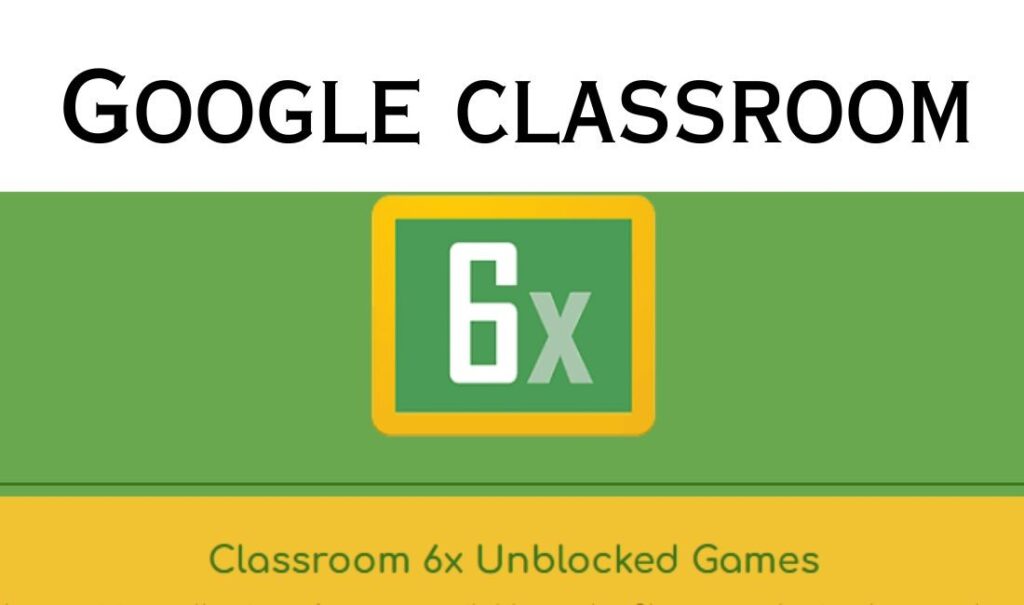Introduction to Google Classroom
The landscape of education is evolving at an unprecedented pace. As classrooms become increasingly digital, tools that enhance learning and streamline Google Classroom 6X teaching processes are emerging everywhere. One standout solution making waves in this transformation is Google Classroom 6X. Imagine a platform that empowers teachers to create dynamic lessons while fostering collaboration among students, all within an intuitive interface. This isn’t just about keeping up with technology; it’s about revolutionizing how we think about education itself.
Whether you’re a seasoned educator or new to the profession, understanding the potential of Google Classroom can open doors to innovative teaching methods and improved student engagement. Let’s dive into what makes Google Classroom 6X such a game-changer in digital education!
The Benefits of Using Google Classroom
Google Classroom transforms the way educators and students interact. It streamlines communication, making it easier to share announcements, assignments, and feedback.
Teachers save time with automated grading features. This allows them to focus on what truly matters: enhancing student learning experiences.
Collaboration is at the heart of Google Classroom. Students can work together seamlessly on projects in real-time, fostering teamwork skills essential for their future careers.
Accessibility is another significant advantage. With cloud-based technology, learners can access materials anytime and anywhere using any device. This flexibility accommodates diverse learning styles and schedules.
Furthermore, integration with other Google tools enhances functionality. Educators can incorporate Docs, Sheets, Slides, and more into their lessons effortlessly.
These benefits create an enriched educational environment that promotes engagement and supports academic success.
Features and Tools of Google Classroom

Google Classroom is packed with features designed to enhance the learning experience. One standout tool is the assignment creation feature, which allows teachers to easily distribute tasks and deadlines. This helps keep students organized.
Another impressive aspect is the integration with Google Drive. Students can collaborate on documents in real-time, making group projects seamless and efficient.
The class stream provides an interactive space for announcements and discussions. It fosters communication between educators and learners while keeping everyone updated on important information.
For assessment purposes, Google Classroom offers quizzes that automatically grade submissions. This saves valuable time for teachers, allowing them to focus more on student engagement rather than paperwork.
Additionally, customization options enable teachers to personalize their classrooms according to specific needs or themes. From adding images to creating unique layouts, the platform supports various teaching styles effortlessly.
Success Stories of Schools Implementing Google Classroom
Across the globe, schools are embracing Google Classroom and witnessing remarkable transformations. One standout example is a small district in Texas. After integrating this platform, teachers reported enhanced communication with students. Assignments became streamlined, allowing educators to focus more on teaching.
In another instance, a high school in California saw an uptick in student engagement after adopting Google Classroom. The interactive features encouraged collaboration among peers and fostered a sense of community. Students felt more accountable for their learning journey.
Moreover, an elementary school in New York utilized Google Classroom to support remote learners during the pandemic. They found that even young children could navigate it easily with parental guidance. This adaptability helped maintain educational continuity when traditional methods faltered.
These success stories illustrate how effectively implementing Google Classroom can lead to improved academic experiences across diverse educational settings.
Tips for Teachers to Maximize the Potential of Google Classroom
To maximize the potential of Google Classroom, teachers should start by organizing their classes effectively. Create distinct topics for assignments and lessons to help students navigate easily.
Utilize the comment feature actively. Engaging with student questions in real-time can foster a sense of community and support.
Incorporate multimedia resources like videos or interactive quizzes. This variety caters to different learning styles and keeps students interested.
Don’t forget about integrating third-party apps that enhance functionality. Tools for assessments or collaboration can be easily linked within Google Classroom.
Encourage peer feedback on assignments using the built-in features. This builds critical thinking skills while promoting teamwork among students.
Regularly check analytics to track student engagement and performance. Understanding these metrics helps tailor your teaching approach more effectively.
Challenges and Limitations of Google Classroom

While Google Classroom offers numerous advantages, it also presents some challenges. One significant limitation is the dependency on a stable internet connection. In areas with poor connectivity, students struggle to access materials and participate effectively.
Another hurdle involves the steep learning curve for both teachers and students unfamiliar with digital tools. Transitioning from traditional methods can be daunting, leading to confusion or resistance.
Privacy concerns are also prominent. Educators must navigate data protection laws and ensure that student information remains secure amid increasing scrutiny over online platforms.
Moreover, not all features are intuitive. Teachers often find themselves navigating complex settings or troubleshooting technical issues instead of focusing on lesson planning.
Integration with third-party applications can sometimes fall short. This may hinder seamless collaboration among different educational resources essential for enhancing learning experiences.
The Future of Digital Education with Google Classroom
The future of digital education is bright with Google Classroom leading the way. This platform continues to evolve, integrating advanced technologies like artificial intelligence and machine learning. These innovations promise personalized learning experiences for students, adapting to individual needs.
As remote and hybrid classrooms become more common, Google Classroom will play a crucial role in ensuring seamless communication between educators and learners. Its user-friendly interface simplifies complex tasks, making it accessible for both tech-savvy users and those less familiar with digital tools.
Additionally, as collaboration becomes essential in modern education, Google Classroom fosters a community-centric approach. Teachers can form dynamic partnerships with colleagues worldwide while sharing resources effortlessly.
Emerging trends indicate that gamification elements may soon be incorporated into the platform. This could enhance student engagement by transforming traditional lessons into interactive challenges that inspire creativity and critical thinking skills.
Conclusion
Google Classroom 6X is more than just a tool; it’s a movement in education. As institutions continue to adapt to the digital landscape, this platform stands at the forefront of innovation.
Teachers and students alike are discovering new ways to connect and collaborate. The emphasis on interactive learning keeps engagement levels high.
With its user-friendly interface, Google Classroom empowers educators to create dynamic lesson plans that resonate with today’s learners. The potential for creativity knows no bounds.
As we look toward the future, it’s clear that platforms like Google Classroom will shape how knowledge is shared across generations. It fosters an environment where learning is personalized and accessible for all.
Change can be daunting, but with tools like Google Classroom 6X leading the charge, embracing digital education becomes an exciting journey filled with endless possibilities.
FAQs
What is Google Classroom 6X?
Google Classroom 6X refers to the enhanced and innovative version of Google Classroom that significantly improves digital education. It combines user-friendly features with powerful tools, making it an essential platform for both teachers and students.
How does Google Classroom benefit teachers?
Teachers can streamline their workflow by organizing assignments, tracking student progress, and providing real-time feedback all in one place. This saves time and enhances communication within the classroom environment.
Is Google Classroom suitable for all grade levels?
Absolutely! Google Classroom caters to a wide range of educational settings, from elementary schools to universities. Its adaptable features allow educators to customize their approach based on student needs.
Can parents access Google Classroom?
Yes! Parents can be invited as guardians in Google Classroom. They receive updates about assignments and due dates, which helps them stay informed about their child’s academic progress.
Are there any costs associated with using Google Classroom 6X?
Google Classroom is free for anyone with a valid school email address. Institutions using G Suite for Education may also have access to additional premium features at no extra cost.
What devices are compatible with Google Classroom?
Google Classroom works seamlessly across various devices including computers, tablets, and smartphones. This ensures accessibility whether you’re at home or on the go!
How can teachers ensure effective engagement in online classes through this platform?
Engagement strategies include interactive quizzes, discussion boards, group projects via breakout rooms, and regular check-ins through video calls. Utilizing these tools effectively fosters a more dynamic learning experience.
By exploring these aspects of Google Classroom 6X further enhances its role in shaping modern education while embracing technology’s potential.
Also read: FintechZoom TSLA Stock








One thought on “Google Classroom 6X Revolutionizing Digital Education”